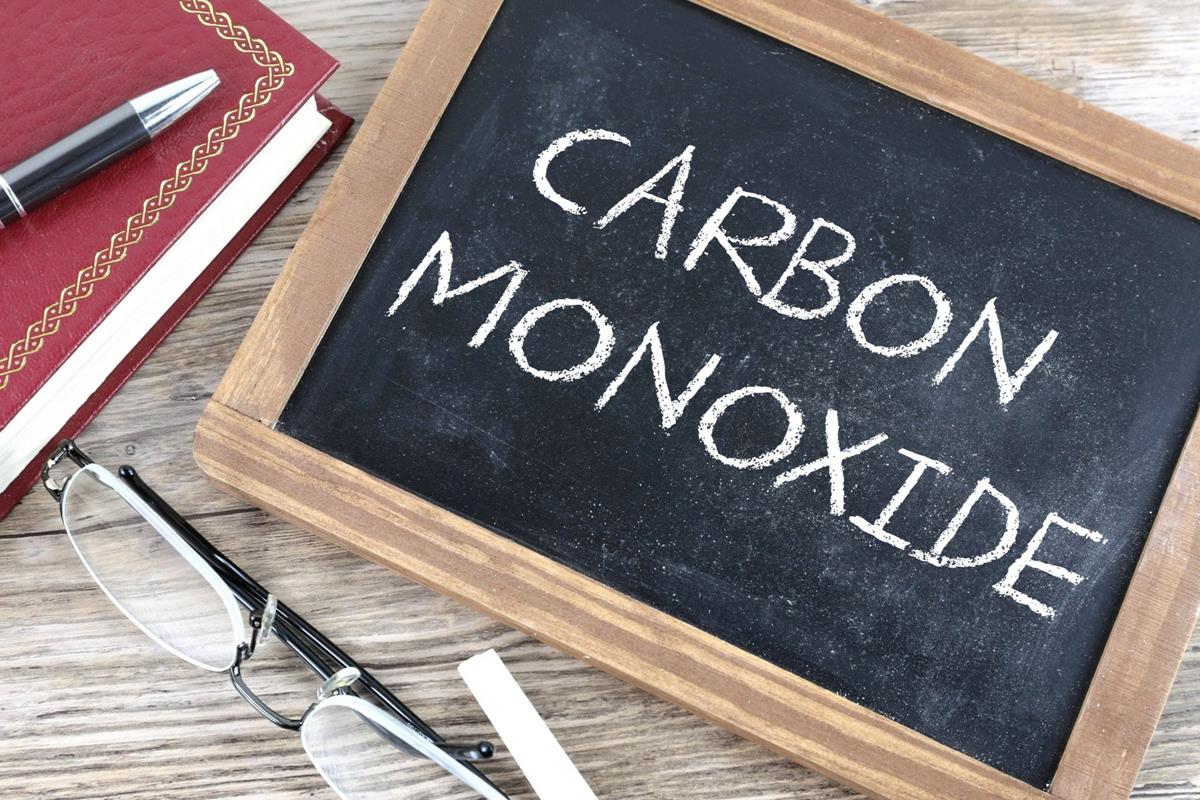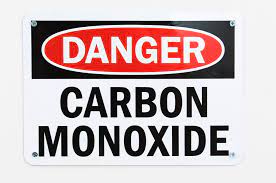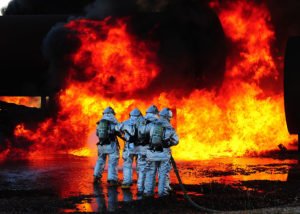Carbon Monoxide Poisoning Can Provoke Traumatic Brain Injuries

- 1. What exactly is carbon monoxide?
- 2. Common settings and activities that can lead to CO poisoning
- 3. Who is most likely to be harmed by carbon monoxide poisoning?
- 4. Which workers are most likely to breathe in CO on the job?
- 5. Symptoms for both mild and moderate carbon monoxide (CO) poisoning
- 6. How do doctors diagnose CO poisoning?
- 7. Escalation of brain damage symptoms set in motion by CO poisoning
- 8. Rehabilitation for CO poisoning victims
- 9. Ways to prevent CO poisoning in the workplace and at home
- 10. How To Find Legal Help For A Traumatic Brain Injury
Every year, too many New Yorkers discover that carbon monoxide poisoning can cause traumatic brain injuries. Unfortunately, this type of damage usually occurs before people realize the dangerous level of their exposure. Once a carbon monoxide alarm goes off at work or at home, you must immediately seek out fresh air, while also helping everyone else escape.
About 450 Americans die of carbon monoxide (CO) poisoning each year, and another 50,000 visit emergency rooms seeking treatment due to their exposure. What follows is a closer look at many of the risky causes of CO poisoning and traumatic brain injuries (TBIs), common symptoms and potential long-term harm, treatment options, and other key facts.
What exactly is carbon monoxide?
This is a type of gas produced during the burning of various fuels, including gasoline. It is very dangerous since you cannot see or taste it. In fact, this type of gas can build up very quickly in most environments — sometimes reaching dangerous levels within seconds or minutes.
Since people can become ill (or even die) if they breathe unusually high levels of carbon monoxide, exposed individuals must be immediately rushed to a hospital ER for help.
Common settings and activities that can lead to CO poisoning
- Using fuel-burning (nonelectric) space heaters
- Failing to exercise proper precautions while using gas stoves
- Burning dangerous substances in lanterns
- Using older home furnaces and heating systems that can emit dangerous fumes
- Carelessly burning kerosene, charcoal, propane, or different types of wood
Who is most likely to be harmed by carbon monoxide poisoning?
- People who already suffer from chronic anemia, heart disease, and general breathing or respiratory issues
- Older Americans, ages 65 and older, can often only afford dangerous space heaters that run on gas to keep warm.
- Unborn babies and infants
- Smokers and others who already have unacceptably high levels of CO in their blood
Which workers are most likely to breathe in CO on the job?
- Firefighters, regardless of the quality of the PPE (personal protective equipment) often provided to them
- Some forklift operators
- Taxi, Uber, Lyft, and other types of rideshare drivers
- Long-haul truck drivers
- Attendants who work at tollbooths while making changes for drivers
- Police and other law enforcement officers
- Welders and others who work with certain types of burning flames
Symptoms for both mild and moderate carbon monoxide (CO) poisoning
People who have suffered a mild form of this type of injury are likely to complain of a mild headache, limited nausea, or shortness of breath.
Individuals who have incurred a more moderate exposure to CO poisoning are likely to report one or more of the following symptoms.
- Dizziness and weakness
- Chest pain
- Loss of consciousness or fainting
- Mental confusion
- A loss of muscle coordination
- A severe headache
- An upset stomach – as well as nausea and vomiting
How do doctors diagnose CO poisoning?
After conducting a thorough physical exam, a blood test must be run. Unfortunately, this may not reveal the full extent of the poisonous effect on some victims — unless they have clearly acute cases. Long-term and even permanent damage to health often results from overexposure to CO (and some victims die).
When testing blood, doctors try to determine the severity of each case based on the amount or percentage of CO found in the blood. A patient’s carboxyhemoglobin(COHb) level is simply a measure of how much CO bonded with the hemoglobin in the blood instead of the oxygen.
Once it becomes clear after a lengthy period of observation that someone has suffered permanent deficits due to CO poisoning, doctors expect to see struggles with issues involving mood, behavior, clear thinking, and basic neurological functioning.
Fairly soon, far worse functional deficits may develop – perhaps within 30 to 60 days.
Escalation of brain damage symptoms set in motion by CO poisoning
While doctors once assumed that brain damage symptoms would slowly ease up over time,
they now know they must keep a close eye on every person who was overexposed to CO
poisoning. The unfortunate increase in symptoms and impairment is referred to as DNS – Delayed Neurological Sequelae.
After doctors have worked hard to stabilize patients with CO poisoning – they often fail to tell them about DNS. This can prove very detrimental to patients struggling with a myriad of brain injuries since CO poisoning can frequently trigger very problematic immune system responses that require strict attention and treatment.

Rehabilitation for CO poisoning victims
At present, there is a strong need for additional rehabilitation programs that can fully address all the problems experienced by those who have been exposed to CO poisoning. However, the Mayo Clinic indicates that survivors of this type of poisoning can still benefit (to a limited extent) from the following treatments.
- Breathing in pure oxygen. This can help your body by making it slightly easier to get oxygen to the tissues and organs that need it most. In especially challenging cases, the CO poisoning survivors may be placed on ventilators to help with this process. ER patients are often immediately offered pure oxygen therapy.
- Spending time in a pressurized oxygen chamber. This type of therapy can help since the air pressure provided is 2 to 3 times higher than it is at normal levels. This helps the body with the process of replacing the CO in the blood with oxygen. Hyperbaric oxygen therapy can be rather useful in the most severe cases since it helps protect both heart and brain tissues that are extra sensitive to CO poisoning.
Hopefully, more effective treatments will one day become available since permanent brain damage due to CO poisoning often prevents survivors from enjoying many basic life activities.
Ways to prevent CO poisoning in the workplace and at home
- Biannual workplace inspections should take place which requires professional safety officials to look for potential leaks and emissions. Homeowners must also conduct regular inspections, always hiring experts who know exactly how to locate and correct potentially dangerous conditions.
- High-quality ventilation systems must be installed and properly maintained wherever necessary at work and in many homes.
- One or two employees should be placed in charge of regularly monitoring all areas where harmful gas fumes might develop. Also, OSHA standards must be strictly enforced and all known violators should be either heavily fined or shut down until further notice.
- Major appliances and equipment that emit dangerous gases must also be routinely monitored so that dangerous CO emissions can be quickly caught. All business owners and homeowners should install multiple CO detectors with appropriately loud alarms. (Landlords should also offer such detectors in individual apartments).
- Whenever possible, gasoline-powered equipment should be replaced by that which runs on electricity, compressed air, or batteries.
- Companies should forbid the use of gasoline-powered engines (and tools) in all poorly ventilated areas.
- Highly responsible businesses and homeowners should periodically test for elevated levels of CO – separate and apart from biannual inspections.
- Proper respirators must be provided to all workers. Like all other PPE (personal protection equipment), these must be properly maintained on a regular basis. Only high-quality respirators and other breathing devices that meet NIOSH standards should be used.
- Employee training must include explaining what the most common symptoms of CO poisoning are so that workers can quickly report them and be immediately transported to a neighborhood emergency room. No worker with common CO poisoning symptoms should simply be allowed to go home instead of seeking treatment.
- All employees should be tested for oxygen sufficiency each time they are preparing to work in areas with poor ventilation.
- Careful records should be kept which document all unfavorable CO readings in the workplace. Supervisory or managerial staff should also be required to have all necessary repairs handled immediately.
- All employers must inform their workers about the OSHA standards requiring immediate care for anyone reporting symptoms common to carbon monoxide (CO) poisoning.
How To Find Legal Help For A Traumatic Brain Injury
If you have suffered a traumatic brain injury due to a CO poisoning accident caused by someone else’s negligence, you need to contact our New York City carbon monoxide poisoning law firm. We will carefully investigate all the facts of your case, review all your medical records, and then fight hard to win the maximum compensation available to you. We want every client to fully recover for all lost wages, pain and suffering, medical expenses, and other losses.





